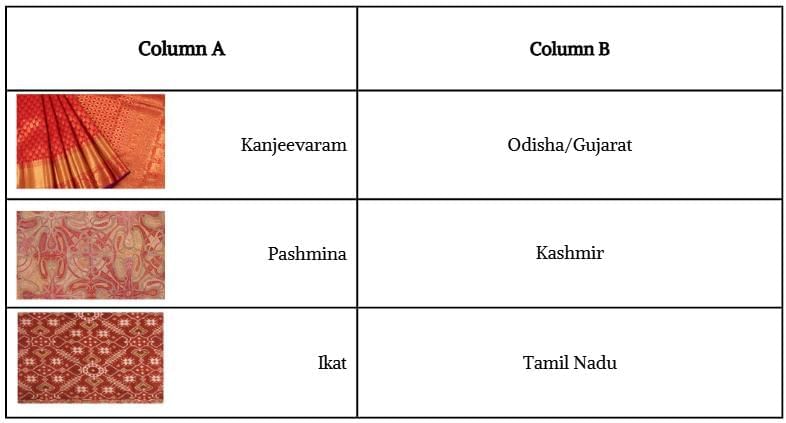Unit Test: Clothes — How Things are Made | Our Wondrous World Class 5 - New NCERT PDF Download
Time: 45 Minutes
M.M.: 20
Attempt all questions.
Question numbers 1 to 6 carry 1 mark each.
Question numbers 7 to 9 carry 3 marks each.
Question number 10 carries 5 marks.
Q1. The process of twisting fibres to make yarn is called:
(a) Weaving
(b) Spinning
(c) Stitching
(d) Knitting
Q2. Fill in the blanks:
In weaving, threads cross ______ and ______ to make fabric.
Q3. True or False:
Silk thread comes from the cocoon of the silk moth.
Q4. Name any one natural fibre mentioned in the chapter.
Q5. Match the following: Q6. Which stitch did you learn as a basic joining stitch?
Q6. Which stitch did you learn as a basic joining stitch?
(a) Chain stitch
(b) Buttonhole stitch
(c) Running stitch
(d) Cross stitch
Q7. Explain the difference between natural and synthetic fibres with one example each.
Q8. Why is handloom weaving important for people and culture? Give three reasons.
Q9. Suggest three ways to reduce cloth waste at home/school.
Q10. Draw and label a simple weaving mat pattern and explain in 4–5 sentences how weaving forms fabric.
Find Solutions for the Unit Test - Here
|
11 videos|212 docs|10 tests
|
FAQs on Unit Test: Clothes — How Things are Made - Our Wondrous World Class 5 - New NCERT
| 1. What are the main materials used in making clothes? |  |
| 2. How has the process of making clothes changed over time? |  |
| 3. What is the significance of sustainable clothing production? |  |
| 4. What role do fashion trends play in clothing production? |  |
| 5. How do cultural influences affect clothing styles? |  |















